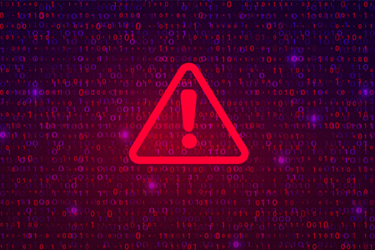FDA Warns Industry Of Fraudulent & Unreliable Lab Testing Data In Premarket Submissions
By Erika L. Roberts, ELR Lab Services LLC

On Feb. 20, 2024, the U.S. FDA issued an announcement titled Fraudulent and Unreliable Laboratory Testing Data in Premarket Submissions: FDA Reminds Medical Device Manufacturers to Scrutinize Third-Party-Generated Data to remind sponsors of device studies and device firms “to carefully evaluate the third-parties they engage to conduct performance testing and to independently verify all testing results before submission to the FDA is truthful and accurate.” The announcement is in response to the fact that in recent years, the FDA has seen an increase in the number of entities that contract out testing or services to other device firms where the data provided by said firms was fabricated, duplicated from other submissions, or just deemed “unreliable.”
The Role Of Outsourcing Such Testing To China And India
The FDA announcement also states that it has identified an increase in submissions containing data that is unreliable from numerous third-party test labs based in China and India. This alarming trend, as the FDA states, has resulted in the FDA being unable to reach a “substantial equivalence determination” or “otherwise authorize marketing for medical devices” that may contain such data. This may have a direct impact when sponsors and manufacturers make submissions where the device cannot be authorized, due to the lack of valid data provided by the third party, unknown to the submitting firm. This can have a detrimental effect on patients and the supply chain that rely so heavily on devices for possible lifesaving treatments.
China and India have emerged as key centers for CROs and laboratories, offering a vast pool of skilled professionals, state-of-the-art facilities, and competitive pricing compared to Western counterparts. This outsourcing of device testing to China and India has allowed device companies to leverage these resources to conduct a wide range of preclinical and clinical studies, including biocompatibility testing, performance evaluation, and regulatory compliance assessments.
According to a 2021 analysis by consultancy firm Deloitte (which is the most recent stat I could find), the market revenue of China’s medical device industry more than doubled between 2015 and 2019, constantly outpacing the expansion in gross domestic product with an annual growth rate of roughly 20% since the launch of the Made In China 2025 plan set by the government.
India’s medical device testing and certification market size was estimated at $1,674.9 million in 2022. During the forecast period between 2023 and 2029, the Indian medical device testing and certification market is projected to grow at a CAGR of 5.2%, reaching a value of $2,388.4 million by 2029. Increasingly stringent government requirements, an increase in the number of small medical device companies without in-house expertise, and rising demand for medical device verification and validation are some of the market-driving factors.
While cost savings and expertise may be attractive incentives, concerns are formally being raised now by the FDA regarding the regulatory compliance, data integrity, and intellectual property protection that may be compromised by third-party testing laboratories. While the FDA “encourages” firms to partner with third-party labs that have been voluntarily accredited under the Accreditation Scheme for Conformity Assessment program, this accreditation does not substitute for a firm’s own due diligence when it comes to validating a third party is compliant with the standards required.
What Can Medical Device Firms Do To Validate Third-Party Data?
Proactively qualifying third-party test labs involves a thorough process aimed at ensuring reliability, accuracy, and compliance with regulatory and corporate standards. Device firms should establish rigorous criteria for evaluating potential testing partners, considering factors such as accreditation, expertise, experience, and track record. Conducting on-site audits and assessments of third-party labs' facilities, quality management systems, equipment, and personnel qualifications can provide valuable insights into their capabilities and commitment to quality.
Auditing a third-party laboratory for quality control may seem dauting, but it's essential to ensure that a third-party laboratory meets stringent standards to maintain the integrity and reliability of any analytical data generated. Here are some key recommendations for conducting quality control audits:
- Establish Audit Criteria. Define clear audit criteria based on regulatory requirements, industry standards, and internal quality management systems. This may include criteria related to laboratory facilities, equipment, personnel qualifications, analytical methods, data integrity, and documentation practices.
- Verify Accreditation and Compliance. Ensure that the third-party laboratory is accredited by recognized accreditation bodies, such as ISO/IEC 17025 for testing laboratories. Verify compliance with relevant regulatory requirements, such as Good Laboratory Practices (GLP) or Good Manufacturing Practices (GMP), depending on the nature of the testing conducted.
- Review Quality Management System. Evaluate the laboratory's quality management system (QMS) to assess its effectiveness in ensuring data integrity, traceability, and compliance with quality standards. Review documentation such as quality manuals, standard operating procedures (SOPs), and records of internal audits and corrective actions.
- Assess Facility and Equipment. Inspect laboratory facilities, including infrastructure, environmental controls, and safety measures, to ensure suitability for the intended testing activities. Evaluate the calibration, maintenance, and validation status of analytical instruments and equipment to ensure accuracy and reliability of test results.
- Evaluate Analytical Methods. Assess the validation, verification, and performance of analytical methods used by the laboratory, including method validation protocols, precision, accuracy, specificity, and limits of detection and quantitation. Verify that methods are appropriate for the intended use and adequately documented.
- Audit Personnel Competence. Review qualifications, training records, and competency assessments of laboratory personnel involved in testing activities. Ensure that personnel are adequately trained, experienced, and competent to perform their assigned tasks and responsibilities.
- Verify Data Integrity. Evaluate procedures and controls in place to ensure the integrity, confidentiality, and security of analytical data, including electronic records and data management systems. Assess adherence to data integrity principles such as ALCOA (Attributable, Legible, Contemporaneous, Original, and Accurate).
- Assess Sample Handling and Storage. Review procedures for sample receipt, handling, storage, and disposal to ensure proper preservation of sample integrity and prevent contamination or degradation. Verify that chain of custody procedures are followed to maintain sample traceability.
- Audit Quality Control Processes. Evaluate the laboratory's internal quality control processes, including proficiency testing, reference materials, and participation in external quality assessment schemes. Verify that quality control samples are analyzed regularly to monitor analytical performance and detect deviations.
- Document Audit Findings. Document audit findings, observations, and recommendations in a comprehensive audit report. Communicate findings to the third-party laboratory management and collaborate on corrective and preventive actions to address any identified deficiencies.
By following these recommendations and conducting thorough quality control audits, organizations can ensure the reliability, accuracy, and compliance of third-party laboratories, safeguarding the integrity of analytical data and maintaining confidence in the quality of products and services.
Closely evaluating all testing data obtained from third-party labs, particularly for critical assessments such as biocompatibility and performance testing, is critical for ensuring the safety and efficacy of medical devices and pharmaceutical products. Firms should implement rigorous data review processes, including thorough documentation review, data verification, and statistical analysis, to assess the reliability and consistency of testing results. Independent verification of all critical and non-critical testing methodologies, adherence to established protocols, and confirmation of data integrity principles are essential steps in mitigating the risk of erroneous or misleading information. Additionally, maintaining transparent documentation of data review activities and any discrepancies identified is crucial for demonstrating diligence and compliance with regulatory requirements in submissions to the FDA or other regulatory authorities. To protect patients and healthcare providers from substandard products and ensure that U.S. patients have access to safe and effective devices, the FDA is pursuing various actions to identify and confront data integrity violations, including through the Bioresearch Monitoring Program. In the meantime, it is imperative that firms verify and validate all data generated by third parties before submission to the agency.
If you have questions about this communication, contact the Division of Industry and Consumer Education (DICE) at DICE@fda.hhs.gov or 800-638-2041 or 301-796-7100.
About The Author
 Erika L. Roberts, MFS, is principal consultant and owner of ELR Lab Services LLC. Having more than 15 years of experience working in many different areas of the pharmaceutical/biotech manufacturing quality environments, she has particular expertise in sterility testing, microbial identification training, HPLC analysis, cGMP training, analytical chemistry, and pharmaceutical regulations. Roberts obtained a master’s in forensic science in 2006 with an emphasis in document examination.
Erika L. Roberts, MFS, is principal consultant and owner of ELR Lab Services LLC. Having more than 15 years of experience working in many different areas of the pharmaceutical/biotech manufacturing quality environments, she has particular expertise in sterility testing, microbial identification training, HPLC analysis, cGMP training, analytical chemistry, and pharmaceutical regulations. Roberts obtained a master’s in forensic science in 2006 with an emphasis in document examination.
